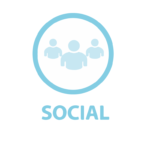
Adult Health Coverage
Community and Family (Cross Age)
Note
*: Statistically unstable
HHSA Regions: Health and Human Services Agency regions
Data not available:
Race-Ethnicity, for American Indian or Alaska Native, and NHPI in 2018-2020 and 2021-2023
Race-Ethnicity categories:
Latino, While, Black or African American, Asian, NHPI: Native Hawaiian/Pacific Islander, Multi-Race: Two or More Races
Source:
California Health Interview Survey (Download date: 12/7/2023; 12/15/2024)
Indicator criteria: adults 18-64 by type of health coverage (uninsured)
What is the indicator?
The indicator—the percentage of adults ages 18-64 without health coverage—monitors public and private health coverage. These data are routinely reported through the California Health Interview Survey (CHIS).
Why is this important?
Lack of health insurance makes a difference for adults, children, and families. Adults without coverage are less likely to have access to health care. When adults go without preventive services or treatments, their health conditions may worsen and lead to higher costs, chronic problems, and premature death. Children’s health is adversely affected when their parents are uninsured. Children with uninsured parents are significantly more likely to have no usual source of primary care (i.e., a medical home) and to have unmet health needs.
What strategies can make a difference?
These evidence-based strategies are used across the country to address health coverage:
- Implement automatic eligibility assessments and renewals for healthcare coverage when families’ complete applications or recertify for other public assistance programs.
- Simplify and streamline the application process and enrollment protocols, including the use of shorter forms, mail or internet-based applications, elimination of asset tests and application fees, and absence of employment verification.
- Collaborate with community organizations such as 211, Access California, Health Center Partners of Southern California, and Family Health Centers to engage health navigators from programs like Covered California’s Navigator Program. These navigators will aid families through various outreach, education, enrollment, and renewal support services.
- Offer incentives to schools, employers, and community-based organizations that identify eligible families and assist them with enrollment.
- Eliminate work requirements or penalties for unemployment.